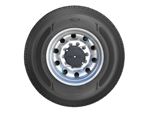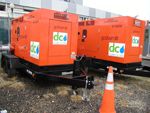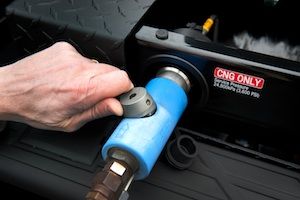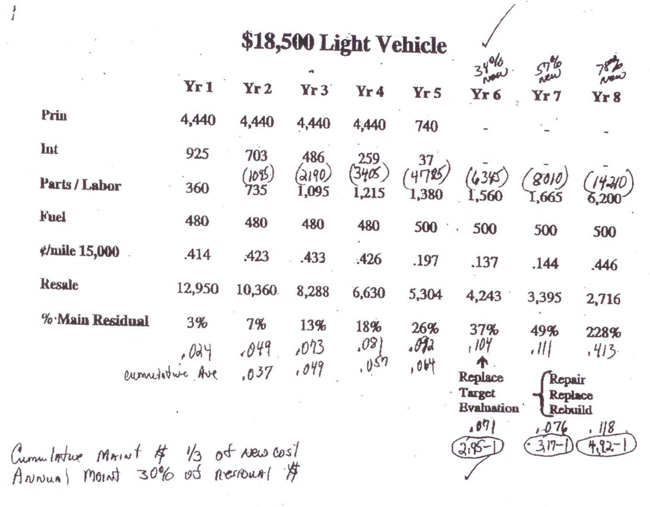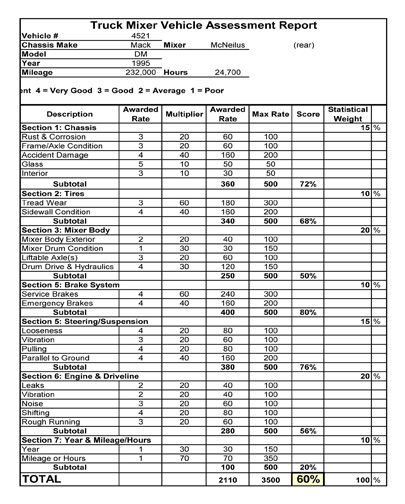Latest Developments in Self-Inflating Tires
What if tires could inflate themselves and maintain optimal pressure at all times, with no human intervention required? How much of an impact could that make on fuel efficiency, tire life cycle, driver safety and a fleet’s bottom line?
New self-inflating tire technologies being developed today may provide a glimpse into future possibilities.
Cost of (Improper) Inflation
According to the U.S. Environmental Protection Agency, a tire that’s underinflated by just 10 pounds per square inch (psi) can reduce fuel efficiency by up to 1 percent per tire.
That’s because an underinflated tire, as it flexes, creates greater friction with the road surface, requiring more energy – or fuel – for the vehicle to overcome the added resistance.
This friction also causes heat to build up in the tire, leading to accelerated deterioration and increased risk of blowout. A report by the Technology & Maintenance Council of the American Trucking Associations on tire pressure monitoring and inflation maintenance states that tires operating constantly at 20 percent below appropriate pressure levels could increase the wear of the tread by 25 percent.
The challenge is that many fleets don’t do a great job of keeping up with tire pressure on a regular basis, with more than half of truck tires on the road operating outside of their target pressure range, according to research by the Federal Motor Carrier Safety Administration.
This is important because tires left on their own, just by natural diffusion, will leak about 2 psi per month. Then there’s the issue of pressure fluctuations resulting from extreme climate temperatures that impact tire performance and longevity. So, it can be difficult and often impractical for fleet managers and drivers to manually keep up with tire pressures all the time.
Self-Contained, Self-Inflating System
One solution under development is Goodyear’s Air Maintenance Technology (AMT), a self-maintaining tire inflation system that enables tires to remain inflated at the optimum pressure without the need for any external pumps or electronics. All components of the system, including the miniaturized pump, are fully contained within the tire.
The project was unveiled in 2011 and has been aided by a $1.5 million grant from the U.S. Department of Energy’s Vehicle Technologies Office. The grant money funds research, development and demonstration of the AMT system for commercial truck tires.
How does AMT work?
“AMT has an internal regulator that senses when the tire inflation pressure has dropped below a specified level,” explained John Kotanides Jr., project manager at Goodyear (www.goodyear.com) in the Akron, Ohio-based Global Innovations Group. “Once the system senses the pressure drop, the regulator opens to allow air to flow into a pumping tube. And as the tire rolls down the road, under the load of the vehicle, the deflection of the tire will flatten that pumping tube, pushing puffs of air back into the tire through the inlet valve. The air flows into the tire cavity and continues to fill the tire as it rolls down the road until the regulator senses that the specified tire pressure has been met and then shuts the system off, until it senses another pressure drop.”
Kotanides said that the company expects to begin piloting AMT on commercial trucks by the end of 2014, but he could not comment on pricing and when the system will be available for sale.
What fleet applications will benefit from AMT?
“Right now, our focus is on the long-haul Class 8 tractor-trailer setup. But we think this type of system could work on almost any tire that has inflation and that travels down the road under a load,” Kotanides said.
Bolt-On Hub System
Another solution to the problem of underinflated tires is Halo, which was launched earlier this year by Burlingame, Calif., startup Aperia Technologies (www.aperiatech.com).
Halo is mounted outside the tire, onto a truck’s axle hub, and is designed to use a wheel’s rotation to maintain optimal tire pressure in dual and wide-based tires on the drive and trailer axles of trucks, tractors, trailers and buses.
“Halo operates on a similar principle to a self-winding watch,” said Josh Carter, chief executive officer and co-founder of Aperia. “It uses a wheel’s rotational motion to pump and maintain optimal tire pressure and therefore does not require any connection to a compressor.”
This is an important distinction because using compressors to power self-inflating tires increases complexity – and cost – and could add weight to a level that negates the fuel economy savings generated by maintaining proper tire pressure in the first place.
Carter said that Halo, which bolts on to the hub on each side of an axle, weighs about 5 pounds per unit and requires fewer than 10 minutes to install by a service technician, without expensive tools.
Since the system is mounted on the axle hub and not integrated into the tire itself, each Halo unit can be remounted for use with multiple sets of tires for up to 500,000 miles or 10 years, the company said.
This bolt-on approach also gives fleet managers flexibility in tire choices, Carter said. “Fleets have a lot of loyalty with a tire manufacturer and they get into a groove with a tire program. With Halo, they can use whichever tire manufacturer they want.”
Carter said that Aperia’s first Halo production run was allocated quickly after launching in March, and the company is currently taking orders for the next round of production. List price is $299 per unit.
Will this system be made available for applications besides long-haul trucking, such as utility fleets?
“Right now our focus is on Class 7 to 8 trucks, primarily those used in long-haul applications because of the payback time frame those fleets can expect from cost savings driven by improved fuel economy,” Carter said. “But we have received a lot of interest for tailoring the system for a wider range of truck sizes and applications. And we have plans in place to conduct a pilot program for the utility market later this year.”
The Bottom Line
Since tire inflation is a critical factor to reducing fuel consumption and overall fleet operational costs, it’s likely that some form of self-inflating tire technology will gain widespread market acceptance. But when? And will the systems of the future look more like Goodyear’s AMT that is integrated within each tire or Aperia’s Halo that is bolted on to the axle hub outside the tire? Or will there be a new, even more effective approach to solving this problem? Keep your eye on this space.
About the Author: Sean M. Lyden is a nationally recognized journalist and feature writer for a wide range of automotive and trucking trade publications, covering fleet management strategies, light- and medium-duty trucks, truck bodies and equipment, and green fuel technologies. He blogs at Strategy + Writing (www.seanmlyden.com).


